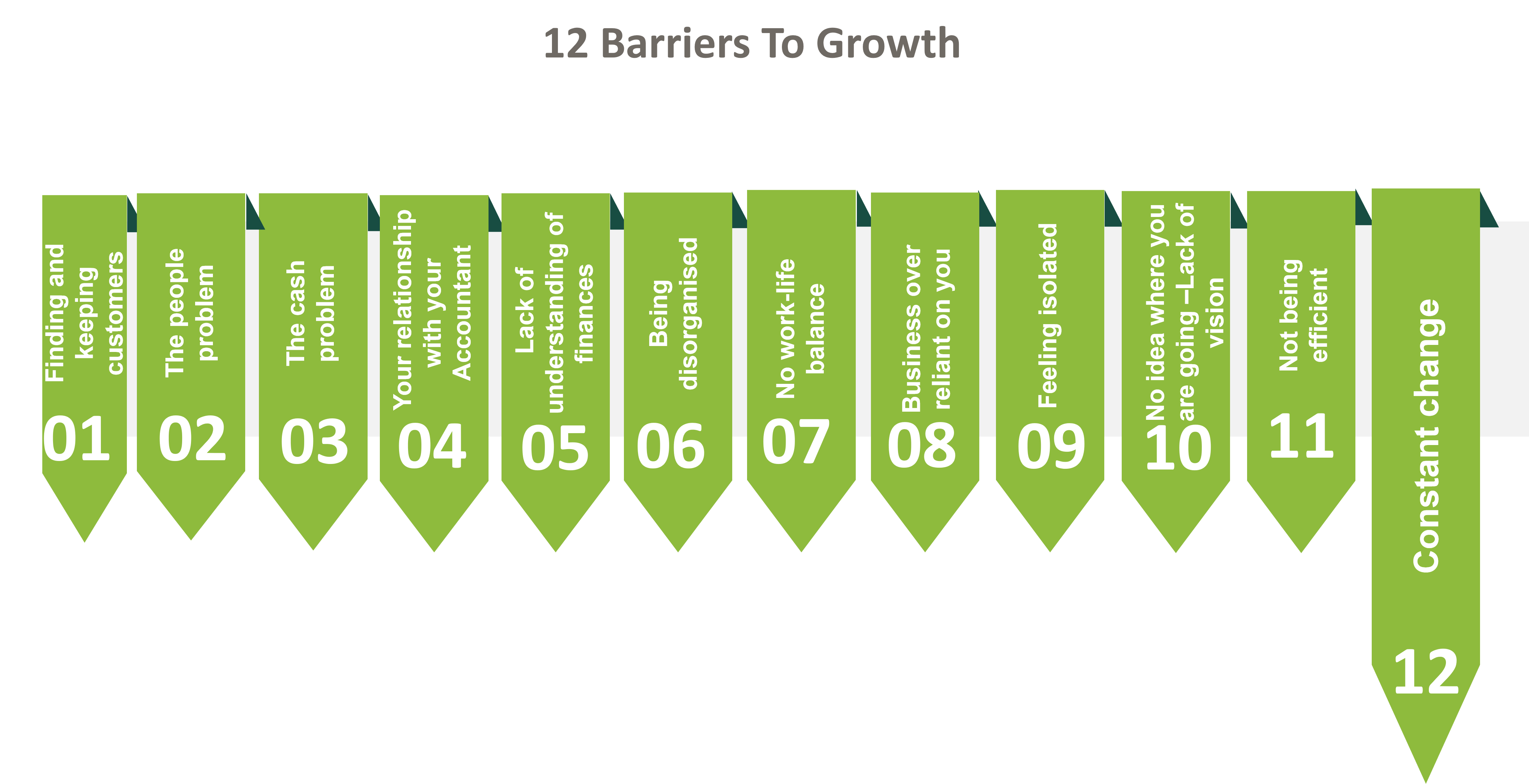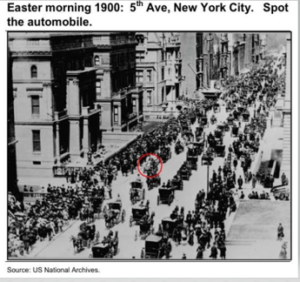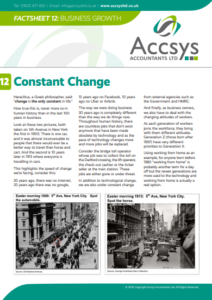Constant change

Heraclitus, a Greek philosopher, said: “change is the only constant in life.”
How true this is, never more so in human history than in the last 100 years in business.
Look at these two pictures, both taken on 5th Avenue in New York the first in 1900. There is one car, and it was almost inconceivable to people that there would ever be a better way to travel than horse and cart. And the second is 10 years later in 1913 where everyone travels in cars.
This highlights the speed of change we’re facing, consider this:
30 years ago, there was no internet, 20 years ago there was no google, 15 years ago no Facebook, 10 years ago no Uber or Airbnb.
The way we were doing business 30 years ago is completely different from the way we do things now. Throughout human history, there are countless jobs that don’t exist anymore that have been made obsolete by technology and as the pace of technology changes more and more jobs will be replaced.
Consider the bridge toll operator whose job was to collect the toll on the Dartford crossing, the lift operator, the check out cashier or the ticket seller at the train station. These jobs are either gone or under threat.
In addition to technological change, we are also under constant change from external agencies such as the Government and HMRC.
And finally, as business owners, we also have to deal with the changing attitudes of workers. As each generation of workers joins the workforce, they bring with them different attitudes. Generation Z (those born after 1997) have very different priorities to Generation X.
Using work from home as an example, for anyone born before 1980, “working from home” is probably another term for a day off but the newer generations are more used to the technology and working from home is actually a real option.
So change is everywhere but how do we use it to our advantage…
To start with a look at your own attitude to change – as a business owner you will need to embrace change – your business is a reflection of you and if you are willing to try new things and adapt, you will never get your employees to this.
Your own attitude to your business should always try to do things better, faster, and more efficiently while giving the customer a better experience.
As doing business gets harder, the businesses that adapt will thrive and survive those that stick to the old way will be assigned to the past.
How to implement change in your business
Change is difficult and emotional for lots of people: The fear of the unknown; the concern about how the changes will affect workloads; the impact it may have on their own level of power and, also concern about their own capabilities. As a leader of a business, when you accept that change can be hard, but can be well managed with care, it becomes easier to approach.
Here are the 8 steps that we would advise to follow as part of a change implementation process:
- Be clear in what the Vision for the future looks like. Have a realistic picture in your head with what work will be like following the change for customers, employees and yourself alike. This will help you to help you to do step 2.
- Think about the drivers for change. These are the things that are why you need to change, and they need to be tangible and fact-based, not woolly. Use data from your finances or customer figures, look at both positive and negatives drivers for changes, such as: “Doing this differently will save 3 hours a week which we could use to grow our customer base”, or “if we continue doing this, we will lose £x per month.”
- Think about the barriers to change. Fear and concern over the unknown are often the biggest barriers to change. Everyone within your team may have a different reason. If you know your team well, you should be able to pre-empt this and build into your plan how to overcome each barrier by selling your vision and communicating your drivers for change.
- Make a plan on the who, what, when and how to communicate with those involved in the change. Identify who the stakeholders in the change process and be clear on your message, including the drivers and your understanding of their barriers. Your communication plan will need to be on multiple levels. One big announcement may not get the results you need: quiet 2-way conversations, with the time taken to listen to concerns, is often the way to go.
- Get key players on your side and involved. Work out who has influence with the team and use that influence. Whether they be a believer or cynic, get them engaged and on your side through sharing your vision and need to change. Getting cynics involved will give them the buy-in to making the change successful.
- Make the change and support it with systems that are simple and practical. Be clear about the parameters of the change and how you will measure its success. Back it up with clear guidelines and rules so that everyone one knows what to expect. This will help to remove the “fear of the unknown” barrier.
- Review progress. Take the time to formally review the progress of the change. Be quick to tweak things if they are not working, but don’t be too hasty – give the change a chance to bed in.
- Celebrate the success. Make a point of the results of the change – the drivers for change address, whether it be money saved or included performance. When your team “survive” a change and can see the benefits at the end, it makes the next change easier to face.
Some extra pointers to be mindful of though while approaching change:
- If, as a leader, you are constantly making changes and have never followed any of the steps above, you will have a lot of barriers to overcome. One of which will be” why is this change process different from any others?” You will need to put a lot more effort into your communication plan to address this concern… and demonstrate the difference with your actions.
- If you have a negative person within your team that will not be reasoned with, and, even with your best efforts, they themselves are a barrier to change, you need to deal with it. Get yourself some good HR advice and get people in your team that are willing to share your vision and values – not sabotage them.
To sum up, then change is going to happen how you deal with will make the difference between a good experience in business or one fraught with problems.




